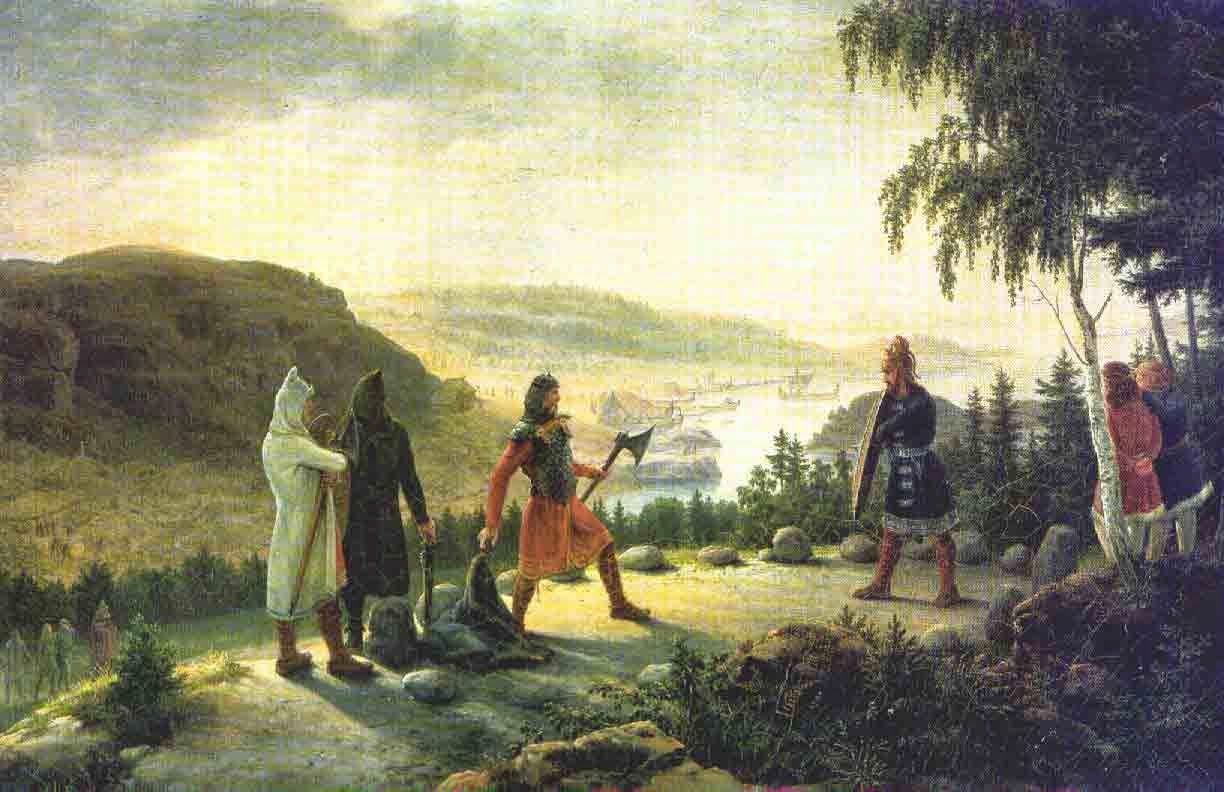The first target was in the Opplands, the coastal area of southern Norway, where, as we have seen, Harald's dynastic powerbase had been located.
.png) |
| The Oppland territories |
Specifically, it was the valley of Gudsbrandsdal that first tasted the young king's wrath, and after he approached, he ordered the entire countryside laid waste and burnt. Most of the inhabitants fled, but some begged for peace and became members of the king's retinue.
 |
| Gudbrandsdal (Credits: Richard James Smith, Wikipedia). |
Harald then faced battle in the land of Orkdal with the king Gryting; as has become the pattern for these narratives, Gryting was taken prisoner, and all his men were killed who didn't join king Harald.
It was shortly after the battle in Orkdal that Harald made one of his most significant announcements, one that completely changed the foundation of Norwegian society for the rest of its history.
For the king, in an unprecedented move, declared that all the land in his domains belonged solely to him, and any who were living upon it, be they noble or farmers (bonde in Norwegian), were in some respects his tenants, and owed him land dues and tax-income. He also set a jarl (a word that became 'earl' in old English) loyal to him to rule and judge legal disputes over every district, for which service they would be awarded one-third of the tax income due to the crown.
It's difficult to overstate how great a tyranny this would have appeared in Old Norse society. Unlike mainland Europe, which was rapidly developing the social system that would become feudalism around this time, the king was not seen as divinely appointed in the Norse world, but simply the man most qualified, by birth or ability, for the role. Furthermore, there was no notion of a national monarchy in Norway before Harald, and the sheer numbers of fellow 'kings' that Harald had to fight for control of the country testifies to this fact.
 |
| I have no idea what this picture has to do with anything...But it kinda fits, no? |
Instead, the standard was that each ruler had the sole right over their own lands, particularly in pagan Norse society, where the chieftains were often also the 'priests' (gothis) who maintained the rites to the gods, many of whom more than likely reckoned their ancestry to the gods as Harald's line did, making them equal to him in descent. So one can imagine how insane one man claiming all the land of Norway solely as his property must have looked!
And indeed, the period in which Harald Harfagre united all of Norway was traditionally seen as the beginning of the Norwegian exodus and settlement of the sparse and far-flung islands around them, from the Faroe islands and Iceland, to the Hebrides, Shetland isles, and the Isle of Man in Britain, many of which were traditionally thought of as founded and settled by those who either took great offense to Harald's claims or had made enemies of the king, although history seems to show that, in many cases, settlement began long before Harald's reign.
 |
| Just another day in Iceland. |
At any rate, after the king's pronouncements, he went on more campaigns of conquest (what else?), this time to the west of his country, his hair growing all the while. First up was Stjordal, where he killed two kings, and then Trondheim, where four rival kings of the surrounding countryside came out to meet him.
 |
| The red represents roughly the size of Harald's kingdom at this point. |
Regardless, Trondheim, situated far to the west of Norway, became not only Harald's capital but the capital of all the Norwegian kings following him until Danish rule of Norway in the late Middle-Ages. When Christianity came to Norway, it also became the center of Norwegian Christianity, a title it retained even after the Reformation.
 |
| Trondheim's Nidaros cathedral, as it looked during the 19th century. |



.png)
































.jpg)


